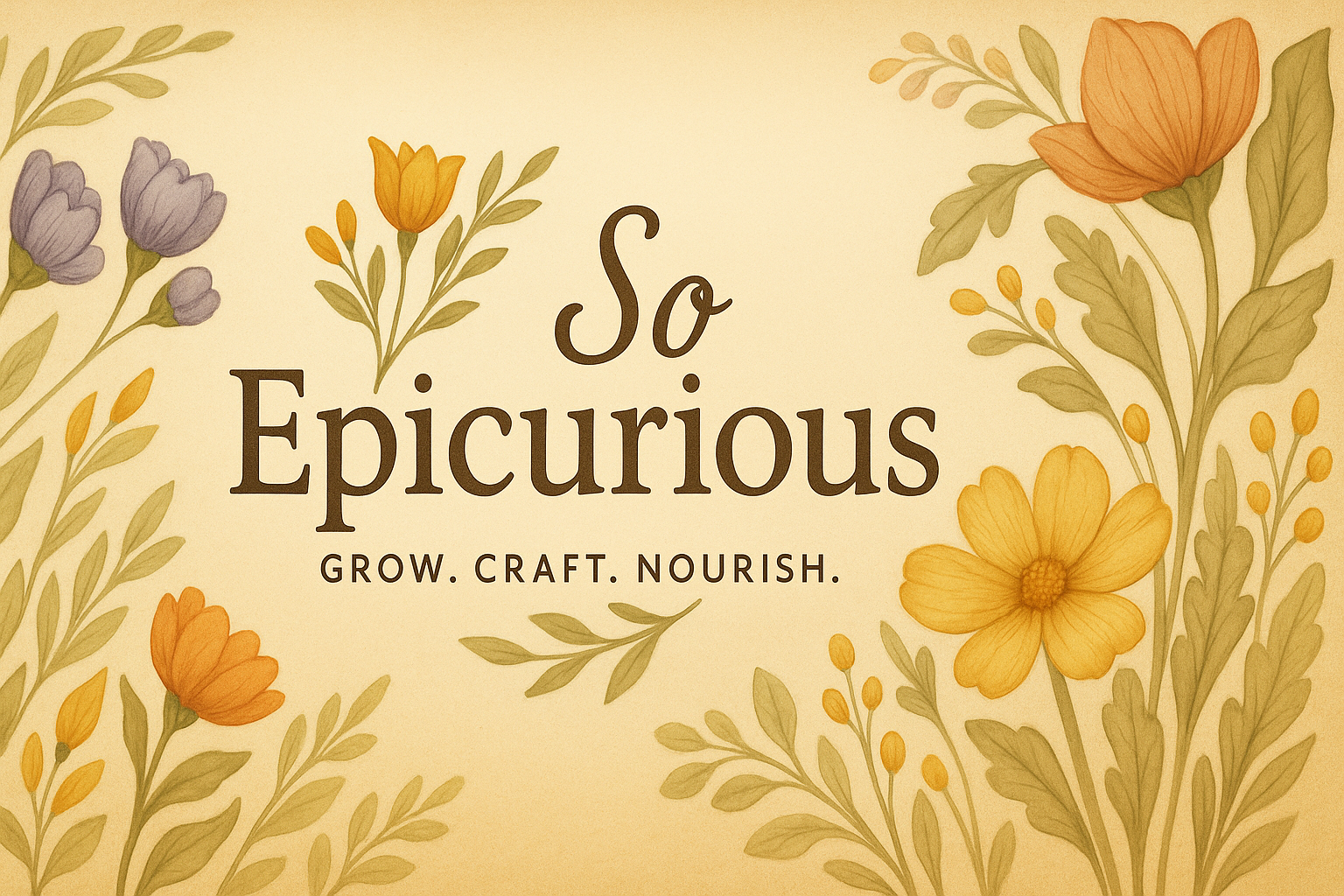An Invitation to Blend with Curiosity, Feeling, and the Five Tastes
🌿 Introduction
Herbal tea is more than a warm drink—it’s a ritual, a reflection, and a gentle kind of alchemy. Whether you’re seeking rest, clarity, or joy, this guide helps you blend teas that support both body and soul.
1. Start with a Feeling or Need
Ask yourself:
- What does my body need today?
- Is there an emotion asking for comfort?
- What kind of support would feel nourishing—calm, warmth, energy, ease?
Let this be the “why” behind your blend.
2. Choose Herbs Using the Formulation Pyramid
Use this three-part structure to guide your blend:
🧱 The Formulation Pyramid
| Role | % | Function | Example Herbs |
|---|---|---|---|
| Active | 50% | Strongest effect, main goal | Tulsi, chamomile, lemon balm |
| Support | 30% | Complements and balances the base herb | Rose, marshmallow root, fennel |
| Catalyst | 20% | Adds movement, warmth, or better absorption | Ginger, cinnamon, peppermint |
<details> <summary>💡 <strong>Example Blend for Calm Focus</strong></summary>
- Active: Lemon balm (relaxing, mental clarity)
- Support: Tulsi (stress support), oatstraw (nourishing)
- Catalyst: Spearmint (focus + flavor lift)
</details>
3. Let the Five Tastes Guide You
Taste reflects function. It helps you know what an herb does and how to balance it.
✨ Taste Chart
| Taste | Action | Examples |
|---|---|---|
| Sweet | Nourishing, grounding | Licorice, oatstraw, fennel |
| Sour | Cooling, mood-lifting | Hibiscus, rosehips, lemon peel |
| Bitter | Detoxifying, digestive | Dandelion root, burdock |
| Salty | Mineral-rich, moistening | Nettle, oatstraw, seaweed |
| Spicy | Stimulating, warming | Ginger, cinnamon, tulsi |
<details> <summary>💡 <strong>Balance Tip:</strong></summary>
- Add sweet to soften bitter
- Add sour to brighten flavor or lift emotion
- Add spicy to bring warmth and circulation
</details>
4. Blend with Intention
🔄 Simple Steps
- Wash hands and keep tools dry
- Measure herbs one by one
- Combine in a large bowl or jar
- Mix in a circular motion (use hands or spoon)
- Inhale deeply—let aroma ground you
🌸 Blending can be a form of meditation. Let it feel ceremonial, not mechanical.
5. Brew with Care
Choose the right method for your herbs:
🔥 Hot Infusion
Best for: Leaves, flowers, aromatics
- Use 1–2 tbsp herbs per 1.5 cups hot water
- Steep covered 10–20 mins
- Strain and enjoy
❄️ Cold Infusion
Best for: Mucilaginous herbs (marshmallow, hibiscus)
- Use 1 tbsp per cup cold water
- Steep in fridge 4–6 hours
- Strain + chill
🍵 Decoction
Best for: Roots, seeds, barks
- Simmer 1 tbsp per cup for 20–45 min
- Strain and serve
🌱 Fresh Herb Infusion
- Fill jar with torn fresh herbs
- Pour boiling water
- Cover + steep until cool
6. Record, Reflect, Revise
Keep a tea journal to grow your knowledge and deepen your connection to herbs.
✍️ What to Log:
- Ingredients & proportions
- Taste & texture
- Physical/emotional response
- What you’d adjust next time
7. Sip + Share the Moment
You can offer your tea to someone with a kind note, or enjoy it quietly with a candle and your thoughts.
“And all your sorrow will follow the vapor.”
— Emperor Kien Lung
<details> <summary>🌼 <strong>Downloadable Coming Soon!</strong></summary>
We’re working on a printable zine-style version of this guide for your tea corner. Stay tuned for a free download to keep by your blending bowls. </details>
🌸 Closing Thought
There’s no perfect tea. There’s only the blend that reflects the moment. The more you tune into taste, feeling, and intuition, the more soulful and effective your herbal teas will become.
